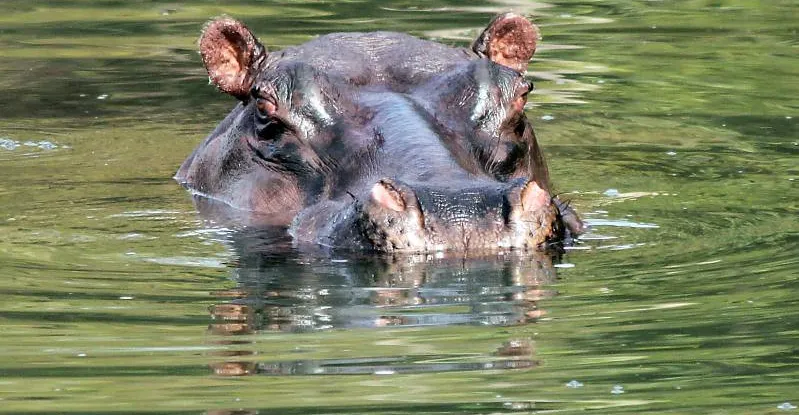Read in
Biodiversity conservation is a crucial issue, particularly in regions such as North Cameroon, which is home to a rich variety of species and natural habitats. But conservation efforts often run into difficulties when it comes to collaborating and communicating with local populations living around protected areas.
A common challenge is the lack of mutual understanding between conservation stakeholders and local populations. Conservation objectives are often perceived as alien to the needs and priorities of local communities, who frequently depend on natural resources for their livelihoods. This can create conflicts of interest and exacerbate tensions between communities and conservation authorities.
Such conflicts are especially marked in North Cameroon, which has an estimated population of two million, and where almost half of the territory is occupied by protected areas and hunting zones (ZICs), which considerably reduce the amount of space that can be dedicated to agriculture and livestock farming, and put increased pressure on usable natural resources.
From its inception, the Strengthening Innovation Systems in North Cameroon (ReSI-NoC) project had a clear objective: to strengthen agro-sylvo-pastoral innovation systems to promote the sustainable use of natural resources and thereby improve living conditions for local people, while reducing conflict in the region.
More specifically, the project seeks to improve the processes of inclusive planning, negotiation, co-creation and implementation of technical, organizational and social innovations. To this end, it has set up four Rural Resource Centres (RRCs) on the borders of the region’s three national parks: Benoué, Faro and Bouba Ndjida.
The RRCs are innovation platforms that enable communities to learn a variety of agroforestry techniques. They represent new extension mechanisms in which farmers themselves are involved in the co-development, testing, evaluation and dissemination of innovations.
In general, RRCs are an effective means of addressing poverty and facilitating participatory action, co-construction, solidarity and collective effort, and are proficient at reaching people and providing them with long-term support. They are part of an action-research approach that encourages ‘learning by doing’, and they integrate the mobilization and appropriation of innovations by local populations. What’s more, the physical space offered by the RRCs enables stakeholders to work together.
“Several methods and tools for planning development interventions that allow different stakeholders to converge at different levels (community, district, landscape, value chain) have been developed and tested in Cameroon,” said Ann Degrande, Country Coordinator for CIFOR-ICRAF in Cameroon and head of the ReSI-NoC project.
“Although these tools are generally effective in diagnosing land use, challenges, opportunities and support needs, they rarely allow for the participatory identification and implementation of solutions,” she added. “Therefore, the implementation of interventions—whether technical, organizational or social—requires participatory research approaches, enabling the design, testing and adaptation of innovations by a range of stakeholders. One of the approaches recommended is that of rural resource centres, which bring together different community players and facilitate the adoption of new techniques.”
The RRC concept is an organizational innovation that is well suited to the social, economic and environmental context of the Northern Region and to the objectives of the ReSI-NoC project. Most importantly, it facilitates synergy and co-action by integrating existing and future innovations.
The Northern Region’s RRCs have been set up strategically on the periphery of its three national parks as a means to facilitate the negotiation of compromises between communities and conservation services. The communities receive technical and material support with a view to sustainably increasing agropastoral productivity and improving their livelihoods, on the condition that they limit the extension of agricultural land and cease all unauthorized activities in the protected areas.
With this in mind, the RRCs at Bawan (on the edge of Benoue National Park) and Tchamba (on the outskirts of Faro National Park) were celebrated during a recent visit by Cameroon’s Minister of Forests and Wildlife, Jules Doret Ndongo.

Cameroon’s Minister of Forests and Wildlife, Jules Doret Ndongo, visits the RRCs at Bawan (left) and Tchamba (right). Photos by Laureanne Mefan/CIFOR-ICRAF
During the event, the curator of Benoue National Park, Achile Mengamenya, described the RRCs as a vital acquisition. “Thanks to the installation of these RRCs, the communities have now learned key elements such as agricultural intensification, which will prevent them from entering the parks in search of land to cultivate,” he said. “The RRCs have also introduced communities to the nursery profession, among other benefits.”
The benefits of the RRCs are many and varied, but one of the most important advantages is the link they have fostered between the parks and their riparian communities, including by providing a physical space for exchanges between conservationists and local communities. “Before, we had no relationship with conservation and clearly saw [conservationists] as enemies,” said François Mamigue, president of the Narral Cooperative in the Bawan RRC. “But today, thanks to the efforts of ReSI-NoC, we communicate and collaborate with them.”
The nurseries established in the RRCs have also made it possible to reforest the parks. Species such as Bracharia and Stylosanthes, which are excellent grazing crops, have also been planted in this experimental sphere. This is helping to resolve land-use conflicts in the region by ensuring that pastoralists have enough pasture for their cattle without putting pressure on land earmarked for other uses such as conservation.
“We are very pleased with this innovation,” said Hervé Boukoua, an innovation facilitator for ReSI-NoC. “We are delighted to see that it serves one of its major causes and meets the project’s objectives.”\\
Acknowledgements
The ReSI-NoC project aims to strengthen economically profitable, ecologically sustainable and socially equitable agro-sylvo-pastoral innovation systems in the North Cameroon region. The project is funded by the European Union and implemented by CIFOR-ICRAF, CIRAD, and IRAD.



